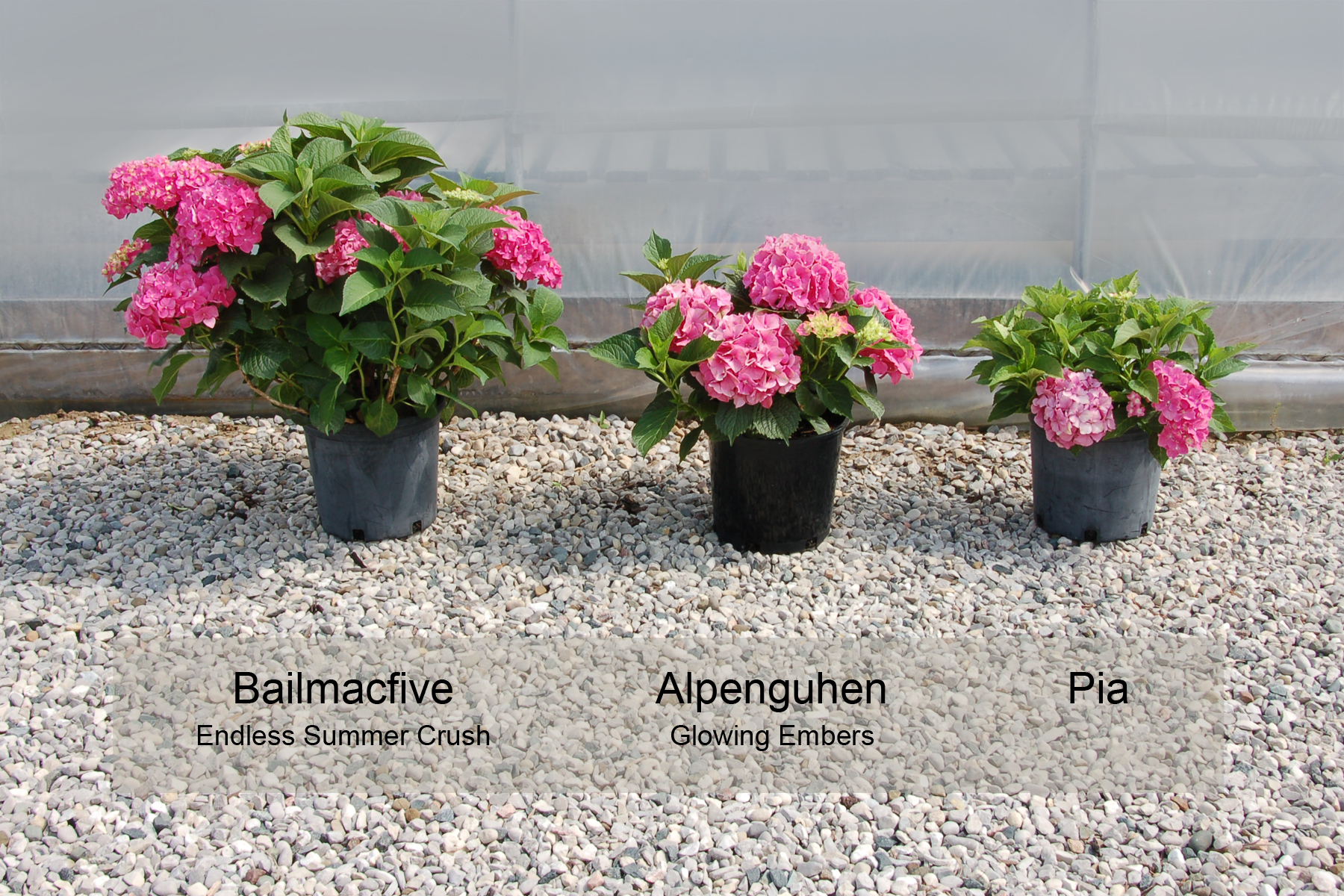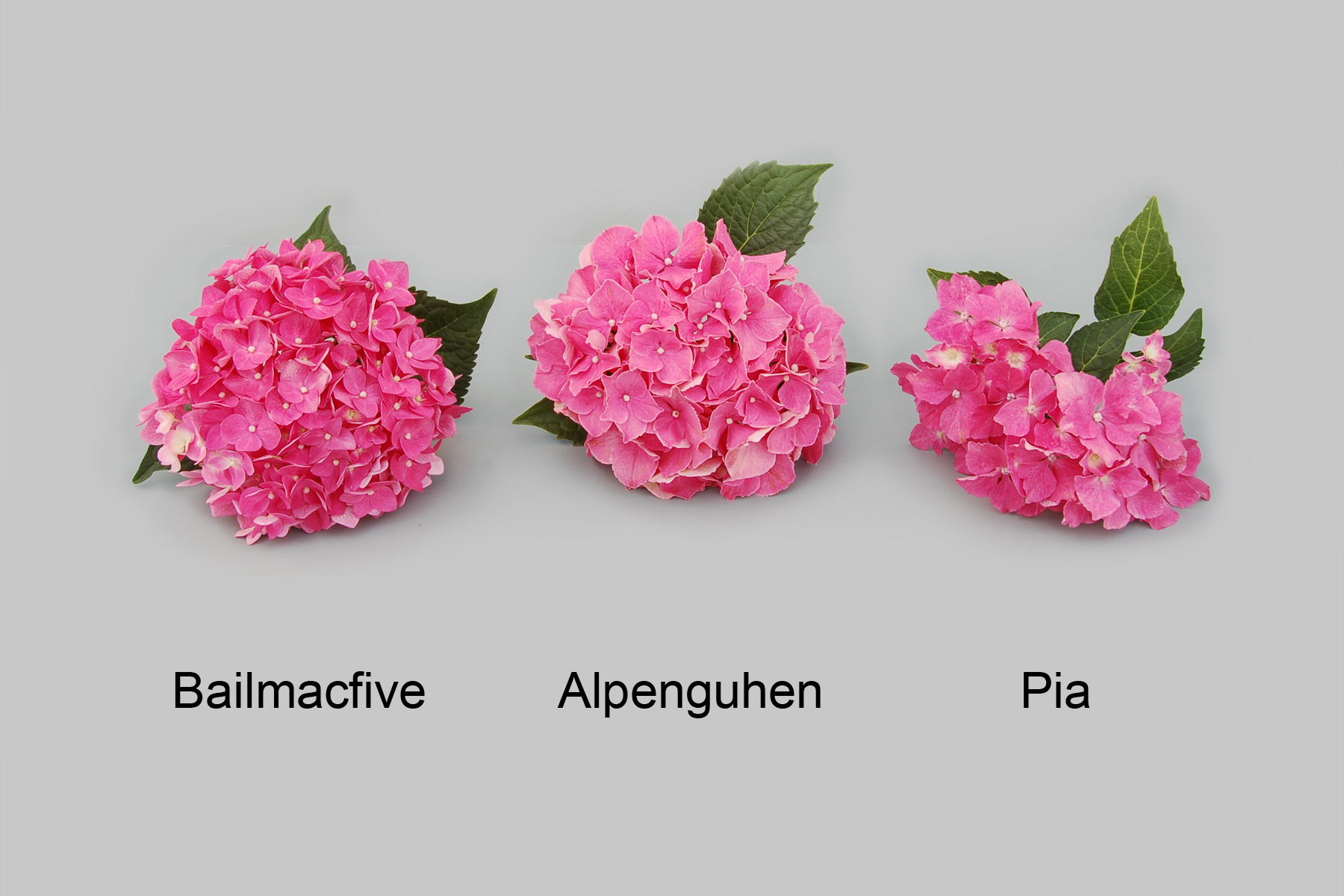Bailmacfive
| Denomination: | 'Bailmacfive' |
|---|---|
| Botanical Name: | Hydrangea macrophylla |
| Applicant/Holder: |
Bailey Nurseries, Inc. 1325 Bailey Road St. Paul, Minnesota 55119-6199 United States of America |
| Breeder: |
Michael A. Dirr, Bogart, United States of America Rhonda Helvick, Madison, United States of America Oren McBee, Bishop, United States of America Joshua Kardos, Asheville, United States of America |
| Agent in Canada: |
BioFlora Inc. 38723 Fingal Line R.R. #1 St. Thomas, Ontario N5P 3S5 Canada Tel: 519-317-7511 |
| Application Date: | 2018-01-26 |
| Provisional Protection:: | 2018-01-26 |
| Application Number: | 18-9375 |
| Grant of Rights Date: | 2022-02-22 |
| Certificate Number: | 6561 |
| Grant of Rights Termination Date: | 2042-02-22 |
Variety Description
Varieties used for comparison: 'Alpenguhen' (Glowing Embers) and 'Pia'
Summary: The plants of 'Bailmacfive' are taller than the plants of both reference varieties. The leaf blade of 'Bailmacfive' is larger than that of 'Pia'. 'Bailmacfive' has an inflorescence that is shorter than that of 'Alpenguhen' and taller than that of 'Pia'. The inflorescence of 'Bailmacfive' is smaller than the inflorescence of 'Alpenguhen' and larger in than 'Pia'. The degree of overlapping of the sepals on 'Bailmacfive' is medium to strong whereas the degree of overlapping on both reference varieties is weak.
Description:
PLANT: non-climbing type, upright growth habit
STEM: no fasciation, green, medium number of red lenticels in autumn
LEAF BLADE: no lobing, ovate to elliptic shaped, medium length of tip, obtuse base, shallow to medium depth of margin incisions, no variegation, medium intensity of green on upper side, weak to moderate glossiness of upper side, medium degree of blistering
FLOWERING: begins mid-season
INFLORESCENCE: globular shape, inconspicuous or slightly conspicuous fertile flowers
STERILE FLOWER: single type
SEPAL OF STERILE FLOWER: absent or very weak undulation, medium to strong degree of overlapping, no margin incisions
SEPAL OF STERILE FLOWER (INNER SIDE): blue pink (RHS 63A) with yellow green (RHS 2D) at base when newly opened, purple red (RHS 63A) when fully opened
PETAL OF FERTILE FLOWER: pink
Origin & Breeding History: 'Bailmacfive' was bred and developed by the breeder, Joshua Kardos, Michael A. Dirr, Rhonda, Melvick, and Oren McBee in Watkinsville, Georgia, USA. The new variety originated from a controlled cross between 'Agrihydradrie' and 'PIIHM-II' in May 2013. 'Bailmacfive' was selected in June 2014 for its growth habit, flower type, remontant blooming, and inflorescence colour. 'Bailmacfive' was first propagated asexually by softwood cuttings in July 2014, in Watkinsville, Georgia, USA.
Tests & Trials: The comparative trial for 'Bailmacfive' was conducted in a polyhouse during the spring and summer of 2020, at BioFlora Inc., in St. Thomas, Ontario. The trial included 10 shrubs each of the candidate and reference varieties. All shrubs were grown from bareroot plant and transplanted into 14 litre containers on May 2020. The observations and measurements were taken from 10 plants or parts of plants of each variety on July 16, 2020. All colour determinations were made using the 2007 Royal Horticultural Society (RHS) Colour Chart.
Comparison tables for 'Bailmacfive' with reference varieties 'Alpenguhen' and 'Pia'
Plant height (cm)
| 'Bailmacfive' | 'Alpenguhen' | 'Pia' | |
|---|---|---|---|
| mean | 54.4 | 45.2 | 26.9 |
| std. deviation | 4.69 | 3.28 | 3.02 |
Leaf blade length (cm)
| 'Bailmacfive' | 'Alpenguhen' | 'Pia' | |
|---|---|---|---|
| mean | 15.1 | 16.7 | 10.4 |
| std. deviation | 1.33 | 0.97 | 1.51 |
Leaf blade width (cm)
| 'Bailmacfive' | 'Alpenguhen' | 'Pia' | |
|---|---|---|---|
| mean | 10.8 | 10.7 | 6.4 |
| std. deviation | 1.29 | 1.12 | 1.01 |
Inflorescence height (cm)
| 'Bailmacfive' | 'Alpenguhen' | 'Pia' | |
|---|---|---|---|
| mean | 7.8 | 9.5 | 3.5 |
| std. deviation | 0.63 | 1.11 | 0.50 |
Inflorescence diameter (cm)
| 'Bailmacfive' | 'Alpenguhen' | 'Pia' | |
|---|---|---|---|
| mean | 15.8 | 20.2 | 9.5 |
| std. deviation | 1.47 | 0.67 | 1.33 |
Click on image for larger view

Hydrangea: 'Bailmacfive' (left) with reference varieties 'Alpenguhen' (centre) and 'Pia' (right)
Click on image for larger view

Hydrangea: 'Bailmacfive' (left) with reference varieties 'Alpenguhen' (centre) and 'Pia' (right)
- Date modified: